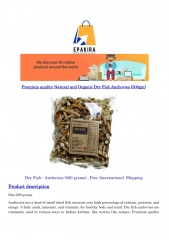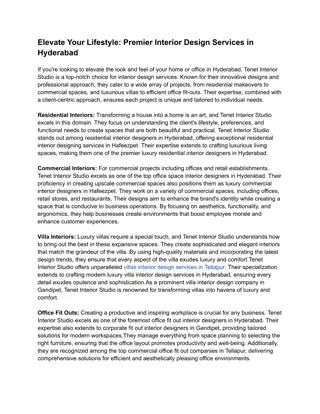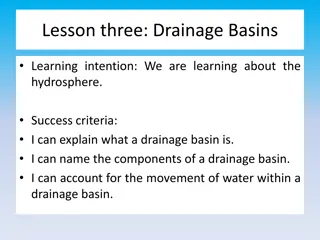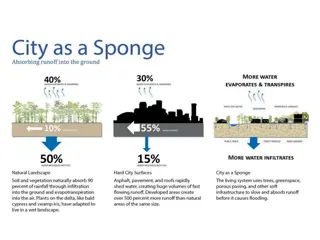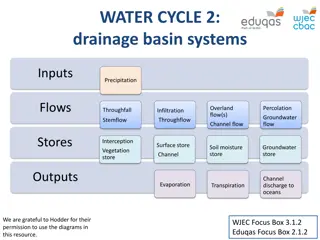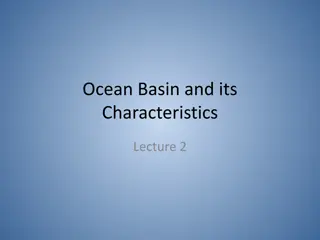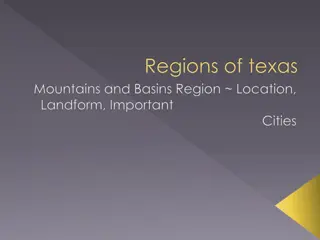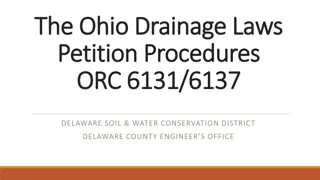Understanding Interior Drainage Basins: Endorheic Systems and Dry Lakebeds
Explore the concept of interior drainage basins, including endorheic systems that do not drain to oceans but instead to closed basins. Learn about regions like the Great Basin, Sahara Desert, and Tarim Basin in China. Discover dry lakebeds such as the Great Salt Lake in Utah and Salar de Uyuni in Bolivia. Visualize Central Asian drainage basins and understand the impact of evaporation on water bodies in these unique landscapes.
Download Presentation

Please find below an Image/Link to download the presentation.
The content on the website is provided AS IS for your information and personal use only. It may not be sold, licensed, or shared on other websites without obtaining consent from the author. Download presentation by click this link. If you encounter any issues during the download, it is possible that the publisher has removed the file from their server.
E N D
Presentation Transcript
World Drainage Basins Drainage basins of the principal oceans and seas of the world. Grey areas are endorheic (interior drainage) basins that do not drain to the ocean.
Interior Drainage (Endorheic) Basins Endorheic drainage basins are inland basins that do not drain to an ocean. Around 18% of all land drains to endorheic lakes or seas or sinks. The largest of these consists of much of the interior of Asia, and drains into the Caspian Sea and the Aral Sea. Other endorheic regions include the Great Basin in the United States, much of the Sahara Desert, the watershed of the Okavango River (Kalahari Basin), highlands near the African Great Lakes, the interiors of Australia and the Arabian Peninsula, and parts in Mexico and the Andes. Some of these, such as the Great Basin, are not single drainage basins but collections of separate, adjacent closed basins. In endorheic bodies of standing water where evaporation is the primary means of water loss, the water is typically more saline than the oceans. An extreme example is the Dead Sea.
Dry Lakebeds Playas (salt flats) and Salars are interior drainage basins where there is insufficient to maintain a permanent body of water due to evaporation in excess of precipitation and/or from humans diverting water from the streams that flow into the basin in quantities great enough to prevent the maintenance of a permanent water body in the basin.
Visualization: Interior drainage basin in Central Asia
Caspaian Sea the world s largest endorheic water body.
Badwater Basin (Death Valley, CA) dry lakebed (no continuous body of water)
Great Salt Lake in Utah is shrinking and will become a dry lakebed eventually.
Lake Titicaca, the Salar de Uyuni, and the Salar de Coipasa (Salars are dry lakebeds). These are all parts of the Altiplano in Peru and Bolivia. Lake Titicaca Salars




